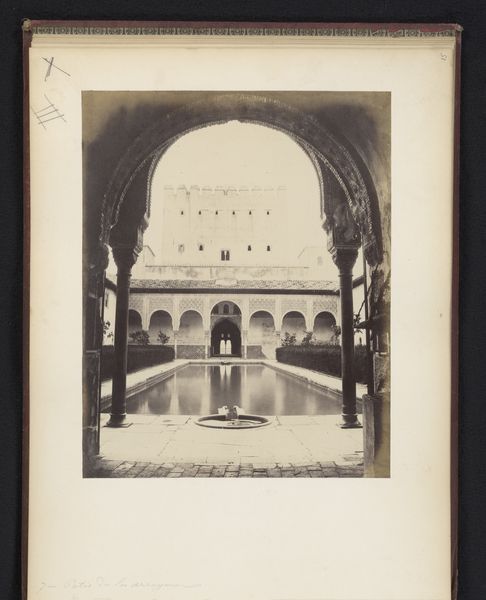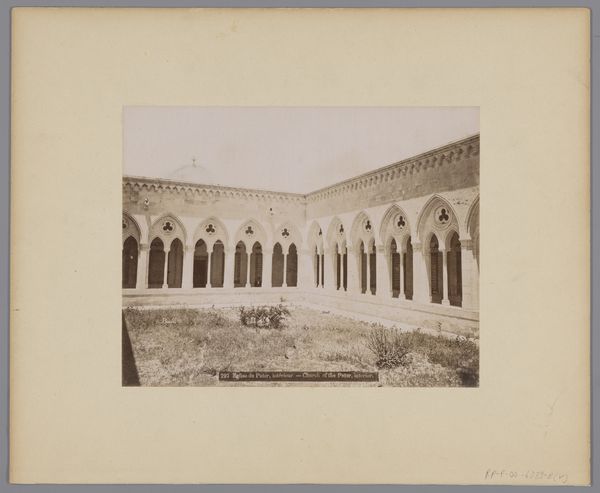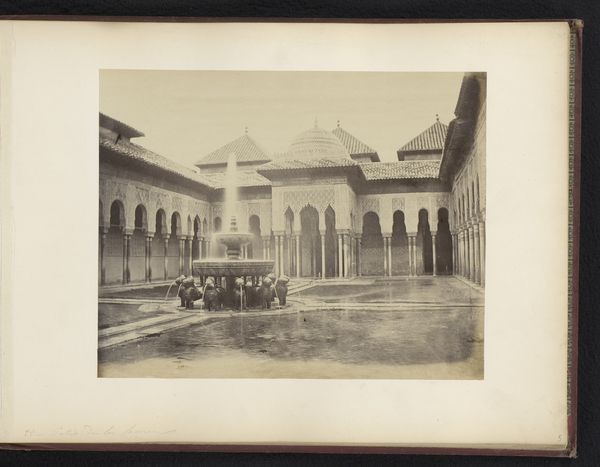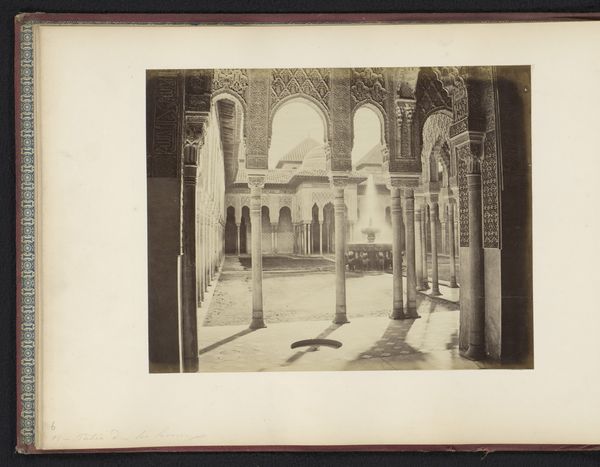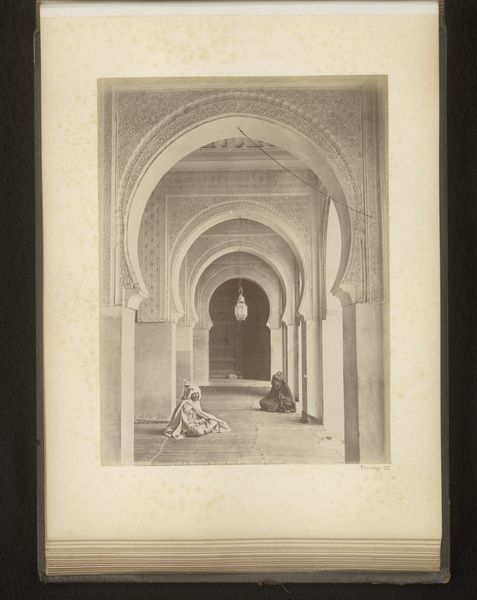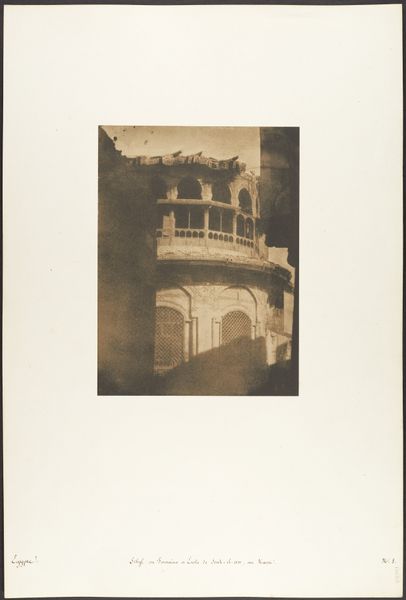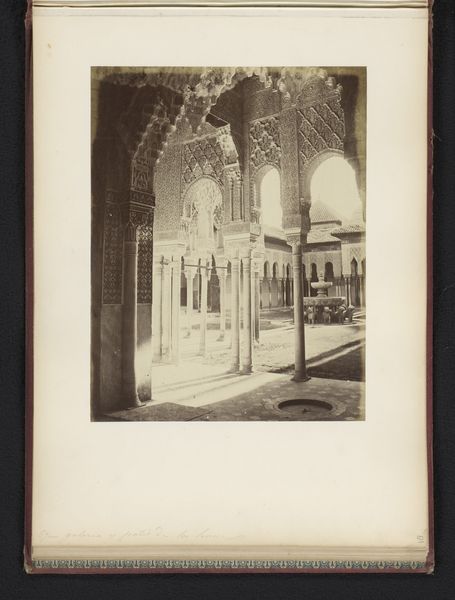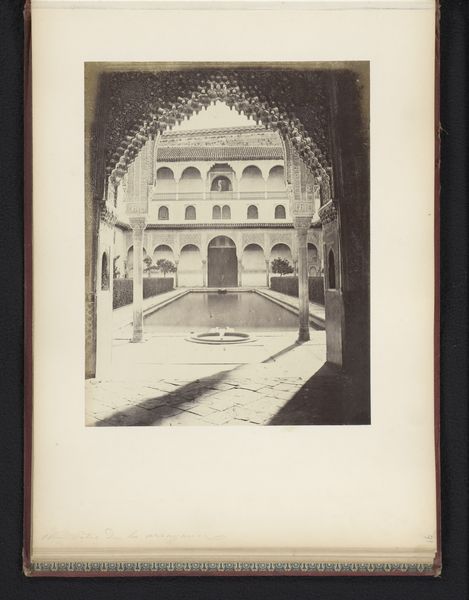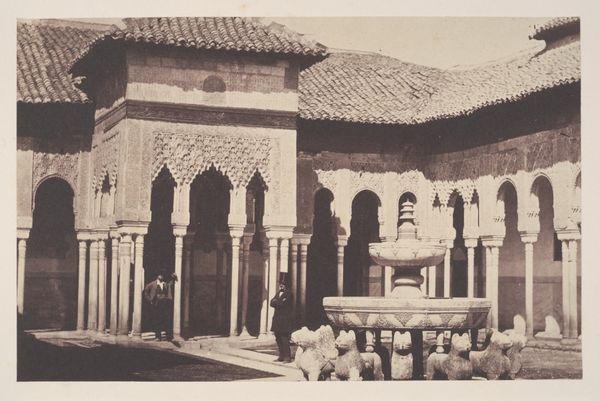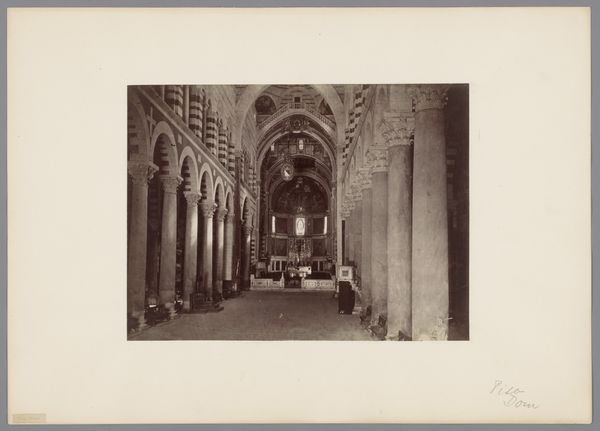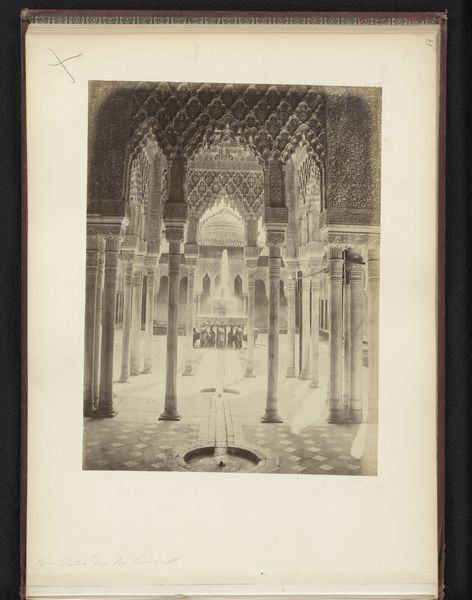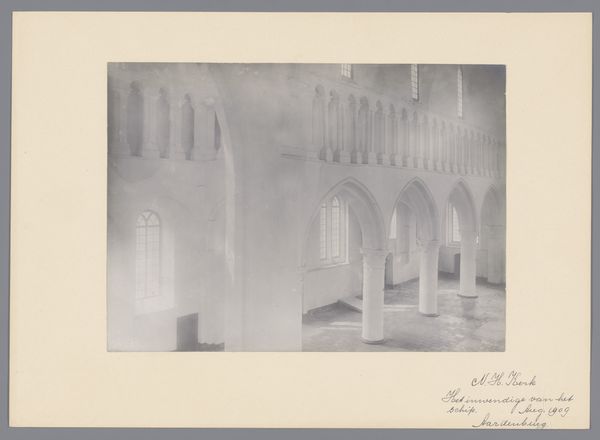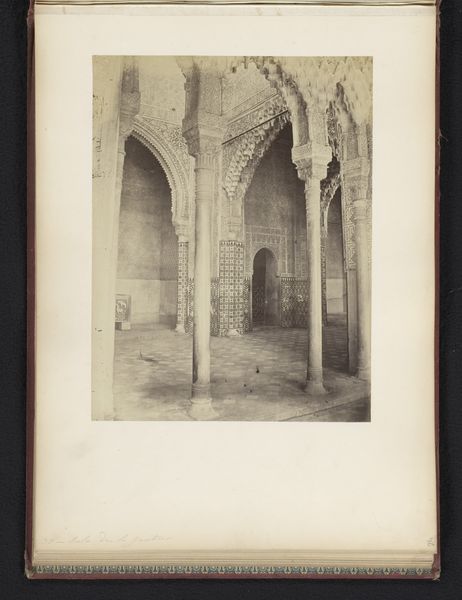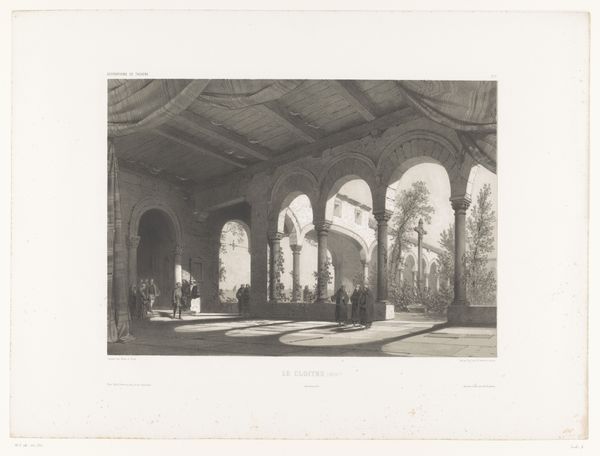
drawing, lithograph, print, etching, paper, ink, architecture
#
drawing
#
lithograph
#
ink paper printed
# print
#
etching
#
landscape
#
paper
#
ink
#
orientalism
#
islamic-art
#
architecture
Dimensions: height 150 mm, width 207 mm
Copyright: Rijks Museum: Open Domain
Curator: Before us is "Leeuwenhof in het Alhambra te Granada," a lithograph, etching, and ink drawing on paper created before 1841 by Friedrich Salathé. The scene captures the Courtyard of the Lions in the Alhambra palace. What's your initial reaction? Editor: The detail is striking, almost hyperreal for a pre-photographic image. It feels incredibly still and hushed, like stepping back in time to witness a secret garden. There's a palpable sense of reverence, yet also a strange orientalist lens at play. Curator: The choice of lions as supporting figures is significant. Lions often embody power, courage, and nobility across cultures. In Islamic art, however, animal representations can be complex, sometimes alluding to guardianship and royal authority but equally triggering tensions due to the Aniconism theological doctrine which discourages depictions of animate objects. Here, it is clearly a conscious decision connecting with visual tropes known in the west. Editor: Precisely. Consider the context. 19th-century orientalism had a tremendous influence through which Western artists romanticized the East and selectively engaged with history to confirm its presumed inferiority. Salathé's lithograph reinforces the allure of exoticism that also suggests an unequal relationship between the West and Islamic cultures, despite representing a cultural treasure in Spain. Curator: I agree. We should unpack the iconographic choices embedded in the fountain design itself, with multiple levels or basins. The tiered structure evokes sacred mountains or the unfolding of divine revelation. Further the architecture creates an amazing play with complex geometry—the arabesques along the columns reference infinite repetition, a sign of the all encompassing presence of God that is traditionally a crucial aspect of Islamic aesthetics. Editor: It is a powerful demonstration of complex layers of symbolic intent. It’s so important to dissect these carefully, asking who benefits from such interpretations. As we examine historical artworks, we also should discuss the ways visual vocabulary from very distant traditions of visual imagery may influence contemporary ideas, in this case for instance on cultural heritage. Curator: Thinking of its long life, this piece reveals the way that architectural representations themselves become cultural objects through print media that both represent and disseminate ideas through time. Editor: Ultimately, it highlights how deeply embedded power dynamics can be within seemingly innocuous scenes.
Comments
No comments
Be the first to comment and join the conversation on the ultimate creative platform.
